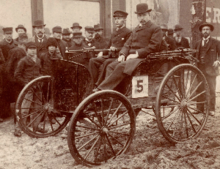
CarlFriedrich Benz was a German engine designer and automotive engineer. His Benz Patent-Motorwagen from 1885 is considered the first practical modern automobile and first car put into series production. He received a patent for the motorcar in 1886, the same year he first publicly drove the Benz Patent-Motorwagen.

An antique car is an automobile that is an antique. Narrower definitions vary based on how old a car must be to qualify. The Antique Automobile Club of America defines an antique car as over 25 years of age. However, the legal definitions for the purpose of antique vehicle registration vary widely. The antique car era includes the Veteran era, the Brass era, and the Vintage era, which range from the beginning of the automobile up to the 1930s. Later cars are often described as classic cars. In original or originally restored condition antiques are very valuable and are usually either protected and stored or exhibited in car shows but are very rarely driven.

Horseless carriage is an early name for the motor car or automobile. Prior to the invention of the motor car, carriages were usually pulled by animals, typically horses. The term can be compared to other transitional terms, such as wireless phone. These are cases in which a new technology is compared to an older one by describing what the new one does not have.

The Brass Era is an American term for the early period of automotive manufacturing, named for the prominent brass fittings used during this time for such features as lights and radiators. It is generally considered to encompass 1896 through 1915, a time when cars were often referred to as horseless carriages.
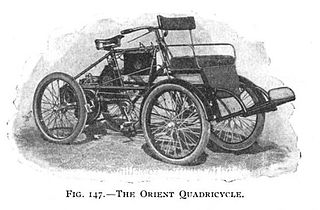
The Quadricycle was an early form of automobile. Earliest models were propelled by a small steam engine, then designers switched to early internal combustion engines as they became available. The word is derived from the fact that it had four wheels and used technology derived from the bicycles of the era.

The Duryea Motor Wagon Company, established in 1895 in Springfield, Massachusetts, was the first American firm to build gasoline automobiles.
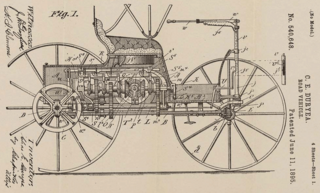
The Duryea Motor Wagon was among the first standardized automobiles and among the first powered by gasoline. Fifteen examples were built by the Duryea Motor Wagon Company of Chicopee, Massachusetts, between 1893 and 1896. Their enterprise followed the first commercially available automobile which was patented by Karl Benz on January 29, 1886, and put into production in 1888.

The Benz Velo was one of the first cars, introduced by Carl Benz in 1894 as the followup to the Patent-Motorwagen. 67 Benz Velos were built in 1894 and 134 in 1895. The early Velo had a 1L 1.5-metric-horsepower engine, and later a 3-metric-horsepower engine giving a top speed of 19 km/h (12 mph). The Velo was officially introduced by Karl Benz as the Velocipede, and became the world's first standardized serial production car. The Velocipede remained in production between 1894 and 1902, with a final count of over 1,200 produced.

Charles Edgar Duryea was an American engineer. He was the engineer of the first working American gasoline-powered car and co-founder of Duryea Motor Wagon Company. He was born near Canton, Illinois, a son of George Washington Duryea and Louisa Melvina Turner, and died in Philadelphia, Pennsylvania, but spent most of his life working in Springfield, Massachusetts. It was in Springfield that Charles and his brother, Frank, produced and road-tested America’s first gasoline-powered car.

Haynes-Apperson Company was a manufacturer of Brass Era automobiles in Kokomo, Indiana, from 1896 to 1905. It was the first automobile manufacturer in Indiana, and among the first in the United States. Elwood Haynes, one of the founders, worked on early types of stainless steel and was the inventor of stellite, and many of the early advances in automobile technology were first invented by the company.

Crude ideas and designs of automobiles can be traced back to ancient and medieval times. In 1649, Hans Hautsch of Nuremberg built a clockwork-driven carriage. In 1672, a small-scale steam-powered vehicle was created by Ferdinand Verbiest; the first steam-powered automobile capable of human transportation was built by Nicolas-Joseph Cugnot in 1769. Inventors began to branch out at the start of the 19th century, creating the de Rivaz engine, one of the first internal combustion engines, and an early electric motor. Samuel Brown later tested the first industrially applied internal combustion engine in 1826. Only two of these were made.

The Benz Patent-Motorwagen, built in 1885 by the German engineer Karl Benz, is widely regarded as the first practical modern automobile and was the first car put into production. It was patented in January 1886 and unveiled in public later that year. The original cost of the vehicle was 600 imperial German marks, approximately 150 US dollars.

Single Center Spring Buggy Company was an American carriage and automobile manufacturer based in Evansville, Indiana. The Single Center factory manufactured the Zentmobile, Zent, Windsor, Worth, Single Center, Evansville, Simplicity and Traveler automobiles from 1903 to 1910.

James Frank Duryea was an American engineer and inventor who, with his brother Charles (1861–1938), invented the first American gasoline-powered automobile.
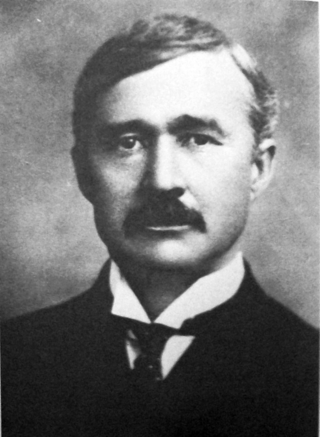
Elwood Haynes was an American inventor, metallurgist, automotive pioneer, entrepreneur and industrialist. He invented the metal alloy stellite and independently co-discovered martensitic stainless steel along with Englishman Harry Brearley in 1912 and designed one of the earliest automobiles made in the United States. He is recognized for having created the earliest American design that was feasible for mass production and, with the Apperson brothers, he formed the first company in the United States to produce automobiles profitably. He made many advances in the automotive industry.

Motocycle was a word used in the United States in the latter part of the 19th century for a horseless carriage, the type of vehicle now known as a car or automobile. The word caught on initially as it was short and easier to understand than other possibilities, such as "automobile carriage", "motor carriage", "motor vehicle", or "auto carriage". It is now archaic and rarely used. The term "motor vehicle" is currently used in legal, transportation planning and academic terminology.

Automotive Industries (AI) is one of the world's oldest continually published trade publications and the oldest specialising in the automaking business. It was founded in November 1895 as The Horseless Age, the second magazine created to cover the world's transition from horse-drawn conveyances to those powered by the new internal combustion engine. The magazine changed its name to The Automobile in July 1909, an era when gasoline, steam and electricity all vied for pre-eminence in motive power.
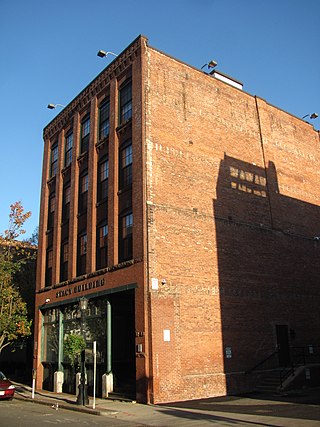
The Stacy Building is a historic building at 41-43 Taylor Street in Springfield, Massachusetts, in the district of Metro Center known as the Club Quarter. On September 20, 1893, Springfielders Charles and Frank Duryea road-tested the first-ever American-built, gasoline-powered car in Springfield, which they had built at the Stacy Building. The first Duryea Motor Wagons were all built by hand at the Stacy Building on Taylor Street in Springfield. Despite the September 20 road-test on Howard Bemis's Springfield farm, the Springfield Republican newspaper did get the story until the Duryea brothers' 2nd public road-test on November 10, 1893.

The Buckeye Gasoline Buggy, also known as the Lambert gasoline buggy, was an 1891 gasoline automobile, the first made in the United States. It was also the first automobile made available for sale in the United States. It was initially a three-wheel horseless carriage, propelled by an internal combustion gasoline engine; it was later developed into a four-wheel automobile with a gearless transmission, and mass-produced during the first part of the twentieth century. The platform was later expanded into a line of trucks and fire engines.
Auto racing began in the late 19th century. It became an organized sport in the early 20th century and has grown in popularity ever since.

